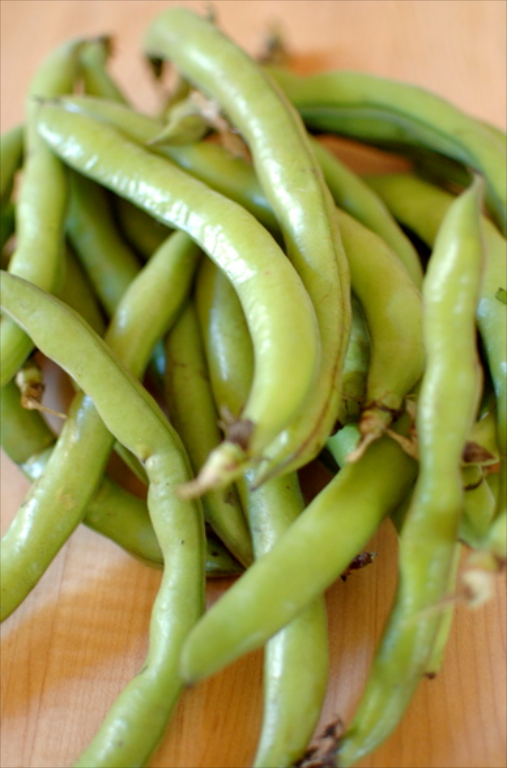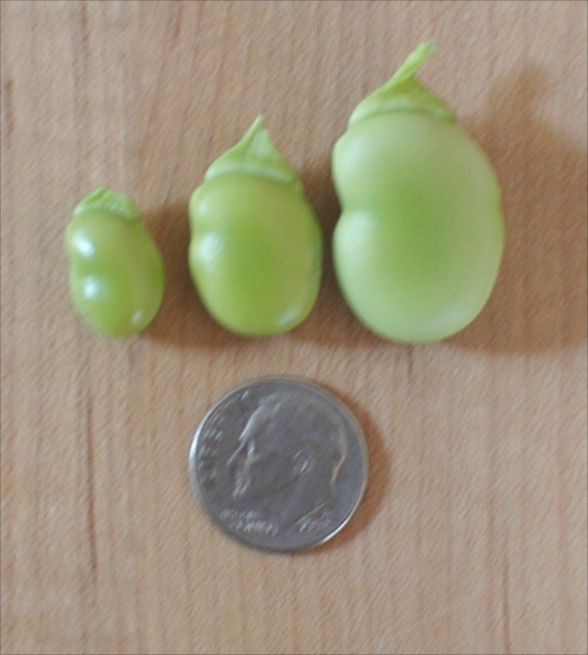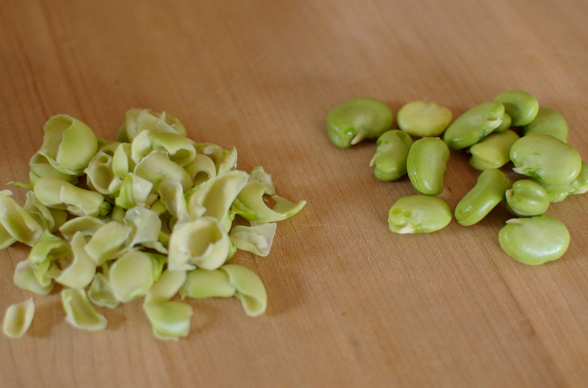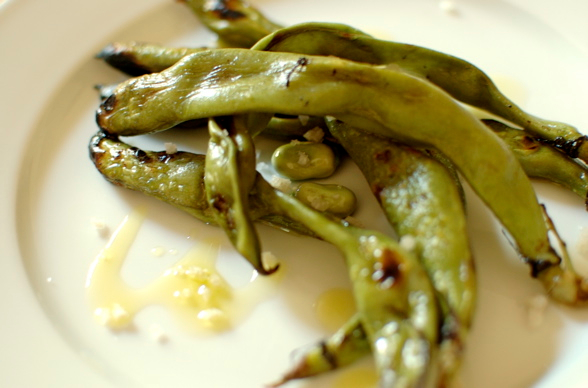Produce Primer: Fava Beans
It’s spring time, and fava beans are hitting the market stalls. I’d venture a guess that the vast majority of people have never tasted these emerald gems, let alone cooked with them. Fear not the fava, however. We’ll have you working magic with them in no time!
Fava beans are from the Mediterranean. Fresh favas have a brilliant chartreuse color, delicate texture and distincitve flavor. They can be used fresh in soups, purees, ragouts, or salads. Dried beans can be pureed into dip-like spreads or to thicken soups. Think of them as a relative of the pea, which they are, and you’ll have some idea how to approach them.
The first beans of the season are small- the size of a little fingernail. They are tender and sweet enough that you don’t have to peel their outer skin. As the beans get larger- later in the season- the tougher skin should be removed. In this photo, the smallest bean is great unpeeled, the middle one is perfectly fine, although some might prefer it peeled. The largest is one that I would suggest being peeled before use. Also, later in the season the outer skin will become more yellow or white rather than green–another good indicator that peeling is in order.
Look for bright, firm and unwrinkled pods. Remember that the yield of the beans inside will be quite low compared to the weight of the whole pods–maybe six or seven beans in each fuzzy whole pod. Buy more than you think you’ll need.
To be sure, there is some effort involved in peeling fava beans. The method is made simpler with the aide of a brief, 60-second blanching. Shock them in ice water and then just pop them out of their skins with a little pinch. You don’t want to use them when you’re cooking for a crowd, unless you can enlist your guests to pitch in and enjoy a glass of wine while they each peel their own favas. Make ’em work for their supper! For a couple or a small family, the minor investment of time is well worth the effort. Take a Zen approach and enjoy the mindless process of methodically shucking and peeling. Imagine what a cozy place it would be to take a nap inside a human-sized fava pod. Ahhhh…nirvana.
Grill some fish and serve a salad of small new potatoes, blanched favas, and parsley.
Make a puree of blanched favas with lots of great olive oil, some garlic, mint, and lemon juice. Eat it as a dip, or grill some crostini, top with good quality Ricotta, and a dollop of fava puree.
Add favas to a braise of artichokes and peas. Use them in pasta dishes or with gnocchi. Mash them with potatoes and heavy cream. Or just gobble them up with a little cheese and salami plate–and again, a glass of wine.
Early in the season, you can also try the leaves from the fava plant. (Same goes for pea tendrils!) Saute in olive oil with a little garlic and a spritz of lemon juice and enjoy. On their own or stretched with some spinach, they’re a new taste sensation that I bet you’ll find delicious.
I also recently was served a small plate of grilled fava beans–whole pods, grilled and drizzled with a bit of olive oil and sea salt. And I’ll readily admit that neither I nor a chef-friend of mind knew if we were supposed to eat the pods or not! But we did, and they were quite tasty. I’ll let you know if any adverse side effects crop up, but thus far, I seem to be in perfect health. Give it a shot!
And how about a big round of applause for this little entry on favas that completely ignored the obvious reference to Hannibal Lechter’s penchant for favas with liver and a nice Chianti? Aw, shoot. Never mind…







